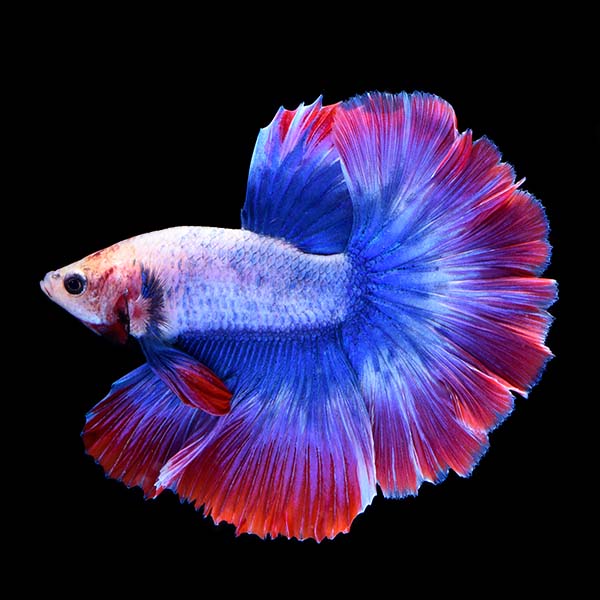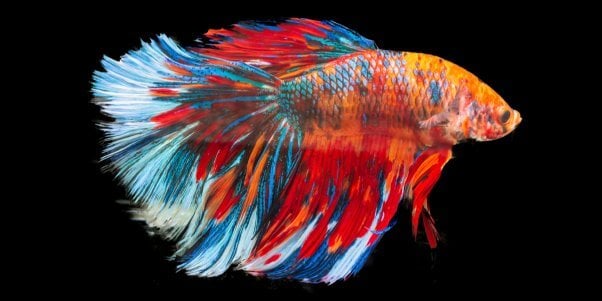Reproducing Betta Fish: a Comprehensive Step-By-Step Guide to Successfully Raising Child Bettas From Eggs to Adulthood
Breeding Betta fish is a careful endeavor that calls for careful preparation and implementation to make sure the successful advancement of fry from eggs to develop fish. As the male Betta diligently constructs a bubble nest and guards the precious eggs, the succeeding phases of treatment and transition demand focus to detail and understanding of best methods.

Picking Breeding Pairs
When starting the trip of breeding Betta fish, choosing the right reproduction pairs is essential to attaining desirable characteristics and a healthy and balanced family tree - betta fish. The initial step in this process is to recognize the certain attributes you want to enhance or protect, such as shade, fin kind, and physique. It is necessary to select genetically varied sets to stay clear of inbreeding, which can cause wellness problems and undesirable qualities
Evaluate potential breeding candidates meticulously. A healthy male Betta needs to display vivid colors, an active behavior, and well-formed fins, while the female should additionally display vivid pigmentation and a rounded stubborn belly, indicating readiness for spawning. Observing the temperament of both fish is vital, as aggressive or excessively shy people might not reproduce effectively.
Keeping records of the moms and dad fish's origins can assist you track genetic characteristics and potential issues. Ultimately, investing time in the selection process will substantially boost the likelihood of generating solid, dynamic spawn that fulfill your breeding goals.

Preparing the Reproduction Tank
Creating an optimum reproduction environment is an essential action after selecting ideal sets for Betta fish. The breeding container must be specifically created to supply comfort and boost the all-natural breeding actions of the fish. Start with a storage tank dimension of a minimum of 10 gallons to guarantee sufficient room for both the male and female Bettas.
Preserve a mild filtration system to maintain the water clean while staying clear of strong currents that can stress the fish. Furthermore, an air stone can be included in supply oxygenation without interrupting the water surface area as well a lot.
Temperature law is critical; aim for a secure series of 78-82 ° F(25-28 ° C) making use of a reputable heating unit. The pH level must be maintained between 6.5 and 7.5, and routine water changes are required to guarantee high water top quality.
Include floating plants or generating mops to produce hiding areas for the female, while also encouraging bubble nest structure by the male - betta fish. Ensure the tank is totally free from sharp designs and any potential hazards, as the welfare of the fish ought to always be focused on during this crucial phase of reproduction.
The Reproduction Refine
Usually, the breeding process for Betta fish involves a collection of distinctive and evident behaviors that indicate preparedness for recreation. The male Betta starts by building a bubble nest at the water's surface area, which works as a site for the fed eggs. This nest is essential, as it offers a risk-free setting for the eggs up until they hatch out.
As soon as the nest is developed, the male will certainly show courtship actions, such as flaring his fins and displaying vivid shades to bring in the woman. The female, upon sensing the man's readiness, will react by showing upright red stripes along her body, signifying her receptiveness.
When the women methods, the male engages in a breeding dancing, often causing an embrace referred to home as the "spawning." During this welcome, the female releases her eggs, which the male fertilizes right away. The fed eggs after that are up to the bubble nest, where the male thoroughly collects and returns them to the nest. Following this, the male presumes responsibility for protecting the nest and guaranteeing the safety of the eggs till they hatch, typically within 24-36 hours. This phase is critical in the reproducing procedure, laying the foundation for successful fry growth.
Taking Care Of Betta Fry
Caring for Betta fry needs mindful focus to their setting and nutrition to guarantee healthy and balanced growth and growth. After hatching out, Betta fry are exceptionally tiny and susceptible, demanding a steady and clean habitat.
Feeding Betta fry is just as crucial. Originally, they should be used infusoria or carefully smashed premium fry food, as their mouths are also tiny to manage larger bits. As they grow, you can progressively introduce larger foods, such as child brine shrimp or powdered flakes, to ensure they receive ample nutrition. Feed them percentages numerous times a day, being careful not to overfeed, which can lead to water quality concerns.
Transitioning to Grownup Bettas
As Betta fry mature, transitioning them to grown-up Bettas is a critical stage that calls for mindful management of their atmosphere and social interactions. This process normally starts when the fry reach around 6 weeks of age, whereupon they can be gradually introduced to a more organized living atmosphere.
To facilitate this shift, it is vital to guarantee that the water parameters-- such as temperature, pH, and ammonia degrees-- are optimum and stable. Adult Betta fish grow in warm water (around 78-80 ° F) with a pH of look these up 6.5 to 7.5. Slowly acclimate the fry to these conditions to reduce anxiety.
Social interactions are another crucial element; man Bettas are infamously territorial and hostile. It is advisable to different males into private containers as they mature. Female Bettas can be housed with each other, yet care should be required to keep track of for signs of hostility.
Furthermore, dietary modifications should be made as the fry grow. Integrate top notch pellets and live foods to support their growth and health. By taking care of these variables effectively, you can advertise a successful shift to their adult years for your Betta fish.

Verdict
Effective breeding of Betta this contact form fish requires mindful attention to detail throughout the entire process, from choosing genetically varied sets to supplying optimal treatment for fry. In addition, a balanced diet and steady adaptation to adult atmospheres are vital for the development and advancement of Betta fish.